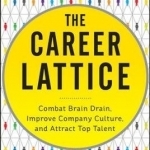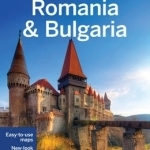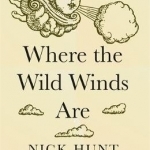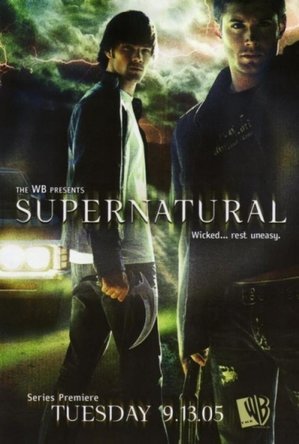
Club Penguin Island
Entertainment and Games
App
Hi Penguins! Are you READY FOR ADVENTURES? There’s a whole, amazing community of penguins...
Sophia (Bookwyrming Thoughts) (530 KP) rated Dreamstrider in Books
Jan 23, 2020
Every time the concept body invasion appears in a book, I regard it with absolute awe and creepiness (an odd combination, methinks).
<div class="separator" style="clear: both; text-align: center;"><img src="http://bookwyrmingthoughts.bookblog.io/wp-content/uploads/sites/317/2015/11/supernatural_dudeyes.gif"; width="320" height="179" border="0" /></div>
Have I mentioned I feel really disturbed over the idea of someone a dreamstrider having the ability to take control of your body and access to your thoughts while unconscious, even for a short period of time?
The concept, however, is uber-cool. Smith brings us to a fantasy world where using dreams in the form of espionage is completely acceptable as a dreamstrider, Livia works for the ministry, and she inhabits another persons body while they are asleep.
If I placed Livia in a character category, she would be right next to Alina Starkov from Leigh Bardugos <i>Grisha</i> trilogy. Over the course of the book, shes on the downside; on the plus side, it fits so well with Livias character and past. Livia lived her entire life as a tunneler, trying to survive day by day until she meets Professor Hesse, where she is introduced to her potential as a dreamstrider and the good she can do for the empire for her citizenship and freedom.
<div class="separator" style="clear: both; text-align: center;"><img src="http://bookwyrmingthoughts.bookblog.io/wp-content/uploads/sites/317/2015/11/freedom.gif"; width="320" height="128" border="0" /></div>
Unlike Alina Starkov (Alina is too mopey over Mal, okay?), Livias mope is more realistic. She has big dreams and strives to achieve them, crushes over her best friend (its harder for males to be one of my best friends that circle is <em>elite</em>), secretly sweet, and insecure/cautious about many things.
But enough about Livia and how shes secretly awesome even though she will never <i>ever</i> admit it. I didnt feel very into <em>Dreamstrider</em> the passphrases in the Land of the Iron Winds are written in a very rhythmic style, but I didnt care too much aside from the fact it sounds poetic. But poetry and I dont get along, and this is why I will never read Ellen Hopkins. I have nothing against the author, though.
<div class="separator" style="clear: both; text-align: center;"><img src="http://bookwyrmingthoughts.bookblog.io/wp-content/uploads/sites/317/2015/11/I-Know-Nothing-Apparently-On-Game-Of-Thrones.gif"; width="320" height="179" border="0" /></div>
Ellen Hopkins aside, dreaming is a big deal it plays a part in almost everything in the Barstadt Empire, but it felt more like a cultural thing (like Greek myths are to Greeks). Im taking it all in, but the whole dreaming thing? Its just there, and the only big deal seemed to be using dreaming in detective work and finding out information. The whole point of the book is really just Livia becoming more confident in not just herself, but her abilities. By the end of the book, I felt satisfied, but I just wanted more from the book.
<a href="https://bookwyrmingthoughts.com/arc-review-dreamstrider-by-lindsay-smi/"; target="_blank">This review was originally posted on Bookwyrming Thoughts</a>

The Career Lattice: Combat Brain Drain, Improve Company Culture, and Attract Top Talent
Book
Reroute your career path for better, faster, longer-lasting success. "If you've been waiting for...
Hazel (1853 KP) rated Where the Wild Winds are: Walking Europe's Winds from the Pennines to Provence in Books
Sep 26, 2017
From the moment the great storm of 1987 almost blew six-year-old Nick Hunt away, he has had the urge to travel. So many travel books are on the market, it is difficult to produce something new and exciting, but after coming across an interesting map of Europe, Hunt was determined to go on a journey that not many have attempted before. With a map listing the named winds of Europe, Hunt sets off on a quixotic quest to follow the winds.
Beginning in the Pennine Mountains, Nick Hunt takes the reader on a personal journey through the continent as he explores the towns and valleys the winds flow through whilst hoping the elusive tempests will occur so that he can experience them himself. With a mix of euphoria and disappointment, Hunt details his arduous journey providing additional knowledge along the way.
Some winds are more evanescent than others – one, discouragingly, not appearing at all – whereas one is so strong, Hunt witnesses a waterfall being blown upwards. Ignoring the warnings of the locals, Hunt, dead set on completing what he intended to do, takes us on a long walk from Italy to Croatia, a trek through the Alpine valleys of Switzerland, and a final expedition to the south of France.
Wind may seem like an odd topic to write a book about, but the Helm, Bora, Foehn and Mistral are no ordinary breezes. Their violence makes Hunt’s journey a dangerous and daring endeavour and is full of stories about past disasters that have occurred as a result of the strong, temperamental weather.
As well as teaching us about these four winds, Nick Hunt has collected facts and stories about the general areas he passes through. Personal stories of the inhabitants break up Hunt’s narrative, however, myths, legends, history and superstitions frequent the lengthy chapters as much as the winds themselves.
Giving wind a name provides it with a personality, as though it is something tangible that can be met and observed. Nick Hunt notes that artists such as Turner and Constable were interested in the weather and fascinated by the effects the wind had on the surrounding landscape. Another artist that was affected by the weather was Vincent Van Gogh - some of his paintings took place in France in the midst of the powerful Mistral. Just as the wind can be seen in his starry night skies, the scenery in France is evocative of a Van Gogh painting.
The winds do not only affect the lands they blow through, they have a strong impact on the wellbeing of the inhabitants. Some experience physical symptoms such as headaches, nose bleeds, dry skin and so forth, whereas others find themselves growing irritable, depressed and confused. The author himself has the opportunity to undergo the effects of these winds. Hunt also puts forward the suggestion that Van Gogh’s deteriorating mental health was a direct consequence of residing in the path of the Mistral.
From witchcraft to the Greek god Aeolus, there are a number of theories about why these strong winds blow. There are, of course, meteorological explanations, which Hunt attempts to explain, but admits he finds it as baffling as the next person. Regardless of the reason, these winds exist and it is captivating to learn about this aspect of Europe.
Where the Wild Winds Are: Walking Europe’s Winds from the Pennines to Provence is a fantastic, beautifully written book. Nick Hunt’s narrative is so personal that it becomes more than a travel documentation or informative non-fiction. As we read, we really get a sense of the emotions and physical hardship Hunt experienced, yet, at the same time, learn so much about European culture as well as, of course, Europe’s winds. Whether or not you are interested in travelling, this book will take you on a journey you will never forget.
From the moment the great storm of 1987 almost blew six-year-old Nick Hunt away, he has had the urge to travel. So many travel books are on the market, it is difficult to produce something new and exciting, but after coming across an interesting map of Europe, Hunt was determined to go on a journey that not many have attempted before. With a map listing the named winds of Europe, Hunt sets off on a quixotic quest to follow the winds.
Beginning in the Pennine Mountains, Nick Hunt takes the reader on a personal journey through the continent as he explores the towns and valleys the winds flow through whilst hoping the elusive tempests will occur so that he can experience them himself. With a mix of euphoria and disappointment, Hunt details his arduous journey providing additional knowledge along the way.
Some winds are more evanescent than others – one, discouragingly, not appearing at all – whereas one is so strong, Hunt witnesses a waterfall being blown upwards. Ignoring the warnings of the locals, Hunt, dead set on completing what he intended to do, takes us on a long walk from Italy to Croatia, a trek through the Alpine valleys of Switzerland, and a final expedition to the south of France.
Wind may seem like an odd topic to write a book about, but the Helm, Bora, Foehn and Mistral are no ordinary breezes. Their violence makes Hunt’s journey a dangerous and daring endeavour and is full of stories about past disasters that have occurred as a result of the strong, temperamental weather.
As well as teaching us about these four winds, Nick Hunt has collected facts and stories about the general areas he passes through. Personal stories of the inhabitants break up Hunt’s narrative, however, myths, legends, history and superstitions frequent the lengthy chapters as much as the winds themselves.
Giving wind a name provides it with a personality, as though it is something tangible that can be met and observed. Nick Hunt notes that artists such as Turner and Constable were interested in the weather and fascinated by the effects the wind had on the surrounding landscape. Another artist that was affected by the weather was Vincent Van Gogh - some of his paintings took place in France in the midst of the powerful Mistral. Just as the wind can be seen in his starry night skies, the scenery in France is evocative of a Van Gogh painting.
The winds do not only affect the lands they blow through, they have a strong impact on the wellbeing of the inhabitants. Some experience physical symptoms such as headaches, nose bleeds, dry skin and so forth, whereas others find themselves growing irritable, depressed and confused. The author himself has the opportunity to undergo the effects of these winds. Hunt also puts forward the suggestion that Van Gogh’s deteriorating mental health was a direct consequence of residing in the path of the Mistral.
From witchcraft to the Greek god Aeolus, there are a number of theories about why these strong winds blow. There are, of course, meteorological explanations, which Hunt attempts to explain, but admits he finds it as baffling as the next person. Regardless of the reason, these winds exist and it is captivating to learn about this aspect of Europe.
<i>Where the Wild Winds Are: Walking Europe’s Winds from the Pennines to Provence</i> is a fantastic, beautifully written book. Nick Hunt’s narrative is so personal that it becomes more than a travel documentation or informative non-fiction. As we read, we really get a sense of the emotions and physical hardship Hunt experienced, yet, at the same time, learn so much about European culture as well as, of course, Europe’s winds. Whether or not you are interested in travelling, this book will take you on a journey you will never forget.

Complete Babylonian Beginner to Intermediate Course: A Comprehensive Guide to Reading and Understanding Babylonian, with Original Texts
Book
Is this the right book for me? Do you want to engage with Babylonian culture and literature in the...
ClareR (6037 KP) rated The Once and Future Witches in Books
Oct 15, 2020
As far back as I can remember (and that’s quite a long way), I’ve loved fairytales, myths and legends. The original stories, if you will. Witches didn’t fare well in these stories, but they were always the characters that I wanted to know more about. What motivated them? Why were they ‘evil’? How did they do THAT?! I wanted to be the ‘good’ version! So this book has ticked a lot of boxes for me. They’re witches, they’re good, normal, women, and they want to make ALL of their lives better.
The main three characters reflect the three stages of a woman’s life (maiden, mother, crone) and also reflect the kinds of lives that many women would (and still do) live.
James Juniper, the youngest, wants to come in to her own power - whether that’s as a suffragist or a witch. She believes that you don’t have to choose: she’s a true fighter and is willing to stand up for her beliefs.
Beatrice Belladonna has escaped her life with the family years ago and works as a librarian: knowledge is her greatest power. Finally, Agnes Amaranth is an unmarried mother who wants to protect her unborn child.
They’ve all been damaged by their abusive father, and this story is as much about them rebuilding their relationship as it is about women coming in to their own power.
The Once and Future Witches has a lot to offer all ages of reader. It makes you think about not just women’s rights, but also race, LGBTQI+ rights, survival, and just standing firm for what you believe in. It shows through the example of the three estranged sisters, that we are all stronger if we stand together.
I didn’t want to stop reading this - I inhaled it, couldn’t put it down, went to bed early two days in a row just to read it, and thought about it in between times. And I’m still thinking about it. If you like witches, you’ll like this. If you like a good story, you’ll love it. If you want to read a book that encompasses all of this and has relevance to our lives today, here’s your book.
This is going to remain a firm favourite for me for a long time. Perhaps I’m one of the future witches?
Many thanks to Little, Brown and NetGalley for my copy of this book.

MyKeto - Low Carb Keto Tracker
Health & Fitness and Reference
App
What is the Ketogenic Diet? The Ketogenic diet is a fast-growing low carbohydrate, high fat (lchf)...
Connor Sheffield (293 KP) rated Supernatural - Season 1 in TV
Apr 20, 2017
The first thing I loved about this show was that the lore's it followed were real from the legend of Bloody Mary, to the Woman in White and even a Wendigo. I knew about these legends but this show taught me more about what people believed about them and how they came to be, so this show is somewhat educational as well as being a great action horror drama show.
SPOILERS AHEAD!
So in Season One we are introduced to a family who witness the death of their mother/wife as she bursts into a fiery explosion on the ceiling of baby Sam's nursery room. Fast forward years later and Sam's in college/university and has left his past behind him until his brother Dean shows up to tell him their Dad has gone missing after a 'Hunting' trip.
This is where we learn that Sam, Dean and their Father, were actual in the life of Hunters who hunt down demons, ghosts/spirits, and monsters.
This show takes you one a journey with Sam and Dean saving lives from all sorts of strange and horrifying evil beings, who don't always turn out to be an evil being, just tortured or maybe even a being trying to warn them of a greater evil.
The effects are on par with a lot of big budget movies, even better than some of the most recent box office hits and in 2005, that says a lot about how the show can only get better with age. And it has!
Writer Eric Kripke truly did create something spectacular and to say that it's still running to this day, with a whole 12 seasons finished and a 13th season coming soon, it's hard to believe that it can still stay fresh and entertaining with this genre, but when you watch this show I guarantee you'll be entertained as there are dozens of pop culture references in every episode from X- Files to Lord of the Rings and many more, and with soundtracks that include rock and metal bands such as AC/DC it's hard to wrap your head around just how awesome this show is.
Many episodes are either named after movies ("Children Shouldn't Play with Dead Things", "The Usual Suspects", "I Know What You Did Last Summer") or classic rock songs ("In My Time of Dying", "Born Under a Bad Sign", "What is and What Should Never Be", "Sympathy For The Devil", "When The Levee Breaks"). - Copied from IMDB
The on screen chemistry between characters is brilliant and more often than not, even in serious situations, it can become hilarious with cheesy one liners or pop culture references used with perfect timing to lighten the mood of the show.
Sam and Dean (portrayed by Jared Padalecki and Jensen Ackles) have some of the best character development that I've seen in a show, and sometimes throughout the different series' the formula of arguing, falling out, and coming back to one another, can become somewhat tedious and repetitive making you scream at the TV saying "WHY!? YOU KNOW YOU'RE JUST GOING TO REALIZE YOU NEED EACH OTHER!" but if you think about it, that's how brothers would be in this situation. Having to spend every day with your brother on the road fighting the unthinkable, it would be stressful and tensions would run high, but you'd soon realize that after everything you've been through, who else could you feel comfortable around?
If you're into the paranormal or want to start learning more about different paranormal legends then this is the show for you.
TIP: For further entertainment, watch the bloopers. Some of the most hilarious clips I have ever seen from a show ;)

Lonely Planet Romania & Bulgaria
Lonely Planet, Mark Baker, Richard Waters and Chris Deliso
Book
Lonely Planet: The world's leading travel guide publisher Lonely Planet Romania & Bulgaria is your...



